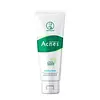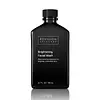What's inside
What's inside
 Key Ingredients
Key Ingredients

 Benefits
Benefits

 Concerns
Concerns

 Ingredients Side-by-side
Ingredients Side-by-side

Water
Skin ConditioningSodium Cocoyl Glycinate
CleansingSodium Lauroyl Isethionate
CleansingCocamidopropyl Betaine
CleansingGlycerin
HumectantCocamide DEA
EmulsifyingAcrylates Copolymer
Sodium Methyl Cocoyl Taurate
CleansingGlycol Distearate
EmollientSodium Chloride
MaskingPhenoxyethanol
PreservativeParfum
MaskingMethylparaben
PreservativeCitric Acid
BufferingPolyquaternium-7
Sodium Polyphosphate
Disodium EDTA
Ethylhexylglycerin
Skin ConditioningSodium Erythorbate
AntioxidantCI 77288
Cosmetic ColorantSodium Benzoate
MaskingCI 77492
Cosmetic ColorantCentella Asiatica Leaf Extract
Skin ConditioningTocopheryl Acetate
AntioxidantO-Cymen-5-Ol
AntimicrobialMagnesium Ascorbyl Phosphate
AntioxidantButyl Avocadate
Skin ConditioningSalicylic Acid
MaskingAsiaticoside
AntioxidantMadecassic Acid
Skin ConditioningAsiatic Acid
Skin ConditioningAmylopectin
Dextrin
AbsorbentXanthan Gum
EmulsifyingAlcohol
AntimicrobialWater, Sodium Cocoyl Glycinate, Sodium Lauroyl Isethionate, Cocamidopropyl Betaine, Glycerin, Cocamide DEA, Acrylates Copolymer, Sodium Methyl Cocoyl Taurate, Glycol Distearate, Sodium Chloride, Phenoxyethanol, Parfum, Methylparaben, Citric Acid, Polyquaternium-7, Sodium Polyphosphate, Disodium EDTA, Ethylhexylglycerin, Sodium Erythorbate, CI 77288, Sodium Benzoate, CI 77492, Centella Asiatica Leaf Extract, Tocopheryl Acetate, O-Cymen-5-Ol, Magnesium Ascorbyl Phosphate, Butyl Avocadate, Salicylic Acid, Asiaticoside, Madecassic Acid, Asiatic Acid, Amylopectin, Dextrin, Xanthan Gum, Alcohol
Water
Skin ConditioningCocamidopropyl Betaine
CleansingSodium C14-16 Olefin Sulfonate
CleansingDecyl Glucoside
CleansingAcrylates Copolymer
Glycereth-2 Cocoate
EmulsifyingSucrose Laurate
EmollientGlycolic Acid
BufferingGlycol Distearate
EmollientArctostaphylos Uva Ursi Leaf Extract
Skin ConditioningLilium Candidum Flower Extract
Skin ConditioningCamellia Sinensis Leaf Powder
ExfoliatingMagnesium Ascorbyl Phosphate
AntioxidantSalicylic Acid
MaskingGlycerin
HumectantGlycyrrhiza Glabra Root Extract
BleachingTocopherol
AntioxidantAminomethyl Propanol
BufferingButylene Glycol
HumectantSteareth-4
EmulsifyingCitric Acid
BufferingBenzoic Acid
MaskingParfum
MaskingWater, Cocamidopropyl Betaine, Sodium C14-16 Olefin Sulfonate, Decyl Glucoside, Acrylates Copolymer, Glycereth-2 Cocoate, Sucrose Laurate, Glycolic Acid, Glycol Distearate, Arctostaphylos Uva Ursi Leaf Extract, Lilium Candidum Flower Extract, Camellia Sinensis Leaf Powder, Magnesium Ascorbyl Phosphate, Salicylic Acid, Glycerin, Glycyrrhiza Glabra Root Extract, Tocopherol, Aminomethyl Propanol, Butylene Glycol, Steareth-4, Citric Acid, Benzoic Acid, Parfum
Ingredients Explained
These ingredients are found in both products.
Ingredients higher up in an ingredient list are typically present in a larger amount.
Acrylates Copolymer is used as a film-forming agent and texture enhancer.
After applied, Acrylates Copolymer forms a thin film cover that helps skin feel more soft. It can help sunscreens become more water-resistant.
It is also used to make a product more thick.
Learn more about Acrylates CopolymerCitric Acid is an alpha hydroxy acid (AHA) naturally found in citrus fruits like oranges, lemons, and limes.
Like other AHAs, citric acid can exfoliate skin by breaking down the bonds that hold dead skin cells together. This helps reveal smoother and brighter skin underneath.
However, this exfoliating effect only happens at high concentrations (20%) which can be hard to find in cosmetic products.
Due to this, citric acid is usually included in small amounts as a pH adjuster. This helps keep products slightly more acidic and compatible with skin's natural pH.
In skincare formulas, citric acid can:
While it can provide some skin benefits, research shows lactic acid and glycolic acid are generally more effective and less irritating exfoliants.
Most citric acid used in skincare today is made by fermenting sugars (usually from molasses). This synthetic version is identical to the natural citrus form but easier to stabilize and use in formulations.
Read more about some other popular AHA's here:
Learn more about Citric AcidCocamidopropyl Betaine is a fatty acid created by mixing similar compounds in coconut oil and dimethylaminopropylamine, a compound with two amino groups.
This ingredient is a surfactant and cleanser. It helps gather the dirt, pollutants, and other impurities in your skin to be washed away. It also helps thicken a product and make the texture more creamy.
Being created from coconut oil means Cocamidopropyl Betaine is hydrating for the skin.
While Cocamidopropyl Betaine was believed to be an allergen, a study from 2012 disproved this. It found two compounds in unpure Cocamidopropyl Betaine to be the irritants: aminoamide and 3-dimethylaminopropylamine. High-grade and pure Cocamidopropyl Betaine did not induce allergic reactions during this study.
Learn more about Cocamidopropyl BetaineGlycerin is already naturally found in your skin. It helps moisturize and protect your skin.
A study from 2016 found glycerin to be more effective as a humectant than AHAs and hyaluronic acid.
As a humectant, it helps the skin stay hydrated by pulling moisture to your skin. The low molecular weight of glycerin allows it to pull moisture into the deeper layers of your skin.
Hydrated skin improves your skin barrier; Your skin barrier helps protect against irritants and bacteria.
Glycerin has also been found to have antimicrobial and antiviral properties. Due to these properties, glycerin is often used in wound and burn treatments.
In cosmetics, glycerin is usually derived from plants such as soybean or palm. However, it can also be sourced from animals, such as tallow or animal fat.
This ingredient is organic, colorless, odorless, and non-toxic.
Glycerin is the name for this ingredient in American English. British English uses Glycerol/Glycerine.
Learn more about GlycerinGlycol Distearate serves as a pearlizing or opacifying agent in cosmetic products.
It's often included in cleansers and haircare products to give them a lustrous or shimmering appearance.
It is derived from stearic acid, a natural fatty acid commonly found in vegetable oils and animal fats.
Glycol Distearate isn't fungal acne safe.
Learn more about Glycol DistearateMagnesium Ascorbyl Phosphate (MAP) is a form of Vitamin C and is an antioxidant. It can help to reduce redness, improve skin texture, reduce the effects of aging, reduce the visibility of dark spots, and brighten skin.
MAP is created by combining ascorbic acid with magnesium salt. While MAP more gentle on the skin than ascorbic acid, it is thought to be less easily-absorbed into the skin.
Due to MAP's stability up to a pH level of 7, it is more stable to air and sunlight exposure than ascorbic acid. The best pH range for MAP is between 5 and 6.
Like other forms of Vitamin C, MAP has been shown to help reduce hyperpigmentation and simulate collagen production.
As an antioxidant, it helps protect your skin against the signs of aging.
Learn more about Magnesium Ascorbyl PhosphateParfum is a catch-all term for an ingredient or more that is used to give a scent to products.
Also called "fragrance", this ingredient can be a blend of hundreds of chemicals or plant oils. This means every product with "fragrance" or "parfum" in the ingredients list is a different mixture.
For instance, Habanolide is a proprietary trade name for a specific aroma chemical. When used as a fragrance ingredient in cosmetics, most aroma chemicals fall under the broad labeling category of “FRAGRANCE” or “PARFUM” according to EU and US regulations.
The term 'parfum' or 'fragrance' is not regulated in many countries. In many cases, it is up to the brand to define this term.
For instance, many brands choose to label themselves as "fragrance-free" because they are not using synthetic fragrances. However, their products may still contain ingredients such as essential oils that are considered a fragrance by INCI standards.
One example is Calendula flower extract. Calendula is an essential oil that still imparts a scent or 'fragrance'.
Depending on the blend, the ingredients in the mixture can cause allergies and sensitivities on the skin. Some ingredients that are known EU allergens include linalool and citronellol.
Parfum can also be used to mask or cover an unpleasant scent.
The bottom line is: not all fragrances/parfum/ingredients are created equally. If you are worried about fragrances, we recommend taking a closer look at an ingredient. And of course, we always recommend speaking with a professional.
Learn more about ParfumSalicylic Acid (also known as beta hydroxy acid or BHA) is a well-known ingredient for treating skin that struggles with acne and clogged pores. It exfoliates both the skin's surface and deep within the pores to help clear out buildup, control oil, and reduce inflammation.
Unlike AHAs (alpha hydroxy acids), salicylic acid is oil-soluble. This allows it to penetrate into pores which makes it especially effective for treating blackheads and preventing future breakouts.
Salicylic acid is also known for its soothing properties. It has a similar structure to aspirin and can calm inflamed or irritated skin, making it a good option for acne-prone skin that is also sensitive.
Concentrations of 0.5-2% are recognized by the U.S. FDA as an over-the-counter topical acne product.
It can cause irritation and/or dryness if one's skin already has a compromised moisture barrier, so it's best to focus on repairing that before introducing this ingredient into your routine.
While salicylic acid does not increase sun sensitivity, it’s still important to wear sunscreen daily to protect your skin.
If you are looking for the ingredient called BHA or Butylated Hydroxyanisole, click here.
Learn more about Salicylic AcidWater. It's the most common cosmetic ingredient of all. You'll usually see it at the top of ingredient lists, meaning that it makes up the largest part of the product.
So why is it so popular? Water most often acts as a solvent - this means that it helps dissolve other ingredients into the formulation.
You'll also recognize water as that liquid we all need to stay alive. If you see this, drink a glass of water. Stay hydrated!
Learn more about Water